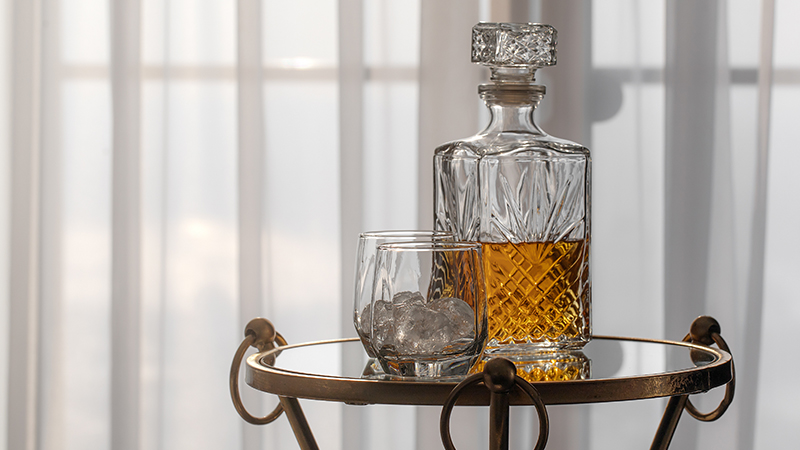Any seasoned drinker is bound to have a collection of glasses, openers, and shakers on hand. But one object that often gets overlooked is the decanter, a vessel often used for serving wine. These usually come in the form of glass bottles, with wide necks and an open top (and yes, it’s like that for a reason).
As it turns out, wine is not the only spirited beverage to spend time in a decanter — whiskey has its own form of decanting (and subsequent vessels to aid the process). Keep reading to learn about wine and whiskey decanters and what distinguishes the two.
Origin
Earlier wine decanters could be found in ancient Greek and Roman times, though these vessels were mostly used for storing liquids rather than decantation. The modern form, however, dates back around 300 years, to a time when European drinkers would consume millions of liters of wine per year, and needed a vessel to store, age, and accentuate its flavors — what has evolved today into “opening up” or letting a wine breathe.
Don’t miss a drop!
Get the latest in beer, wine, and cocktail culture sent straight to your inbox.

Whiskey decanters have their own history dating back to the Renaissance. Made from glass and ornamental, earlier containers mimicked ancient Venetian vessels. Ceramic and crystal decanters grew in popularity during the 19th century. But over time, practicality and taste favored glass, which is more popular and affordable today.
Production
During the 1730s, British glassmakers introduced stopper whiskey decanters, which protected the spirit from air. While decanting whiskey had largely been for decoration and to see the honey-tinted spirit more clearly, there was now an effective way to store and transport whiskey.

This is perhaps the biggest difference between whiskey and wine decanters. The former requires a stopper to keep the decanter airtight. Spirits can last for years in glass containers, and the iterations of style are purely aesthetic. Wine decanters, on the other hand, possess a wide, rounded base and long, thin neck. They don’t require stoppers, since wine won’t remain good in the decanter much longer than a few days.
Flavor
It’s important to understand why you want to decant an alcoholic beverage. While moving wine from its original bottle into a decanter may take an extra step or two, your fruitful efforts will make up for it in the drinking experience.
This is because wine decanters allow for the liquid to breathe. There are two key reasons for this: separating tannins and sediments within the wine and introducing wine to oxygen, allowing for flavors and aromas to take center stage.
Whiskey contains trace amounts of tannins as well, so a decanter can take some effect in that sense. But seeing as most whiskeys are bottled at 40 percent ABV or more, the possibility to change its chemical composition, and therefore its flavor, through oxidation is much smaller.


